Abstract
Eight pigeons were trained on a delayed presence-versus-absence discrimination paradigm in which a sample stimulus was presented on some trials but not on others. If a sample was presented, then a response to one choice key produced food. If no sample was presented, a response to the other choice key produced food. The basic finding was that performance remained constant and well above 50% correct on no-sample trials as the retention interval increased, whereas performance dropped precipitously (to below 50% correct) on sample trials. In the second phase of the experiment, all of the trials were no-sample trials, and reinforcers were delivered probabilistically for one group of pigeons and according to time-based schedules for the other group. The exact reinforcement probabilities used in Phase 2 were those calculated to be in effect on no-sample trials in Phase 1 (according to a discrete-state model of performance). Subjects did not show exclusive preference for the richer alternative on no-sample trials in the first phase, but those in the probabilistic group developed near-exclusive preference for the richer alternative during the second phase. These data are inconsistent with the predictions of the discrete-state model, but are easily accommodated by an account based on signal detection theory, which also can be applied effectively to discrimination of event duration and the “subjective shortening” effect.
Keywords: memory, presence-versus-absence discrimination, delayed matching to sample, signal detection theory, timing, key peck, pigeons
Full text
PDF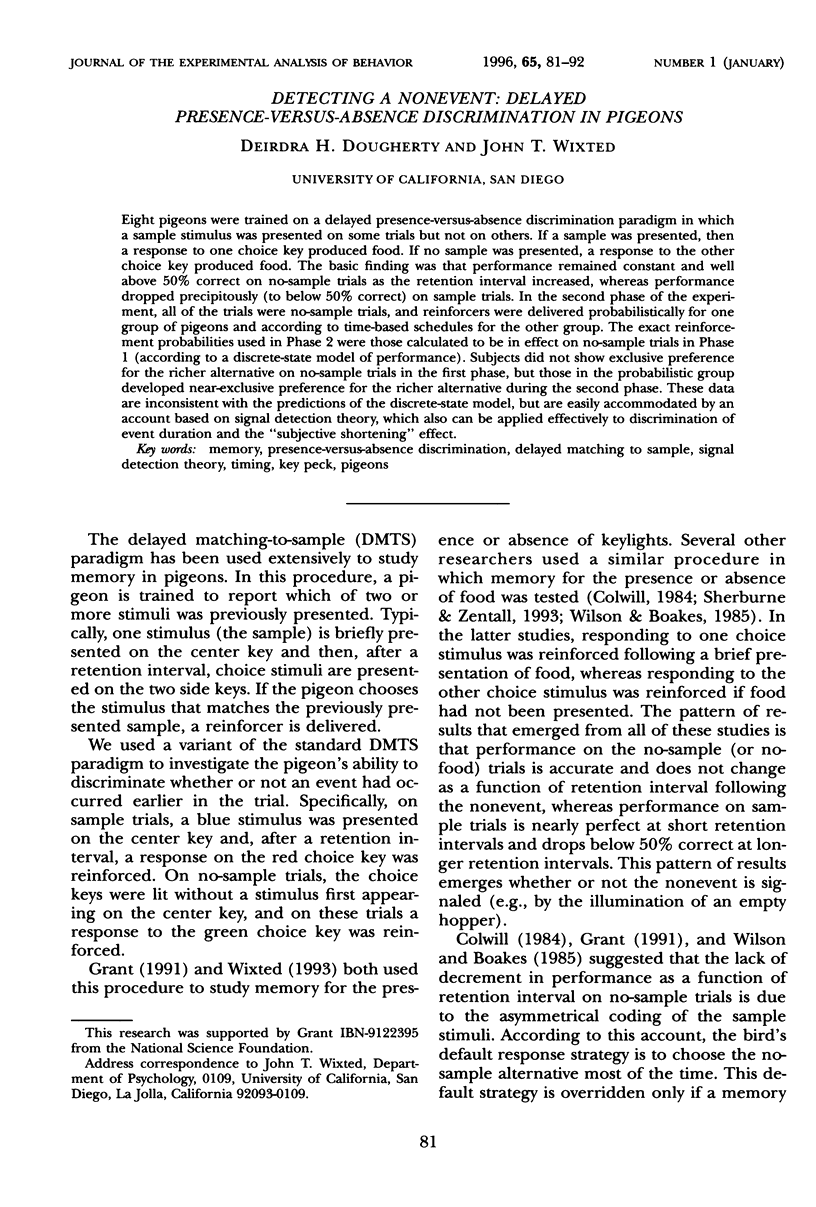
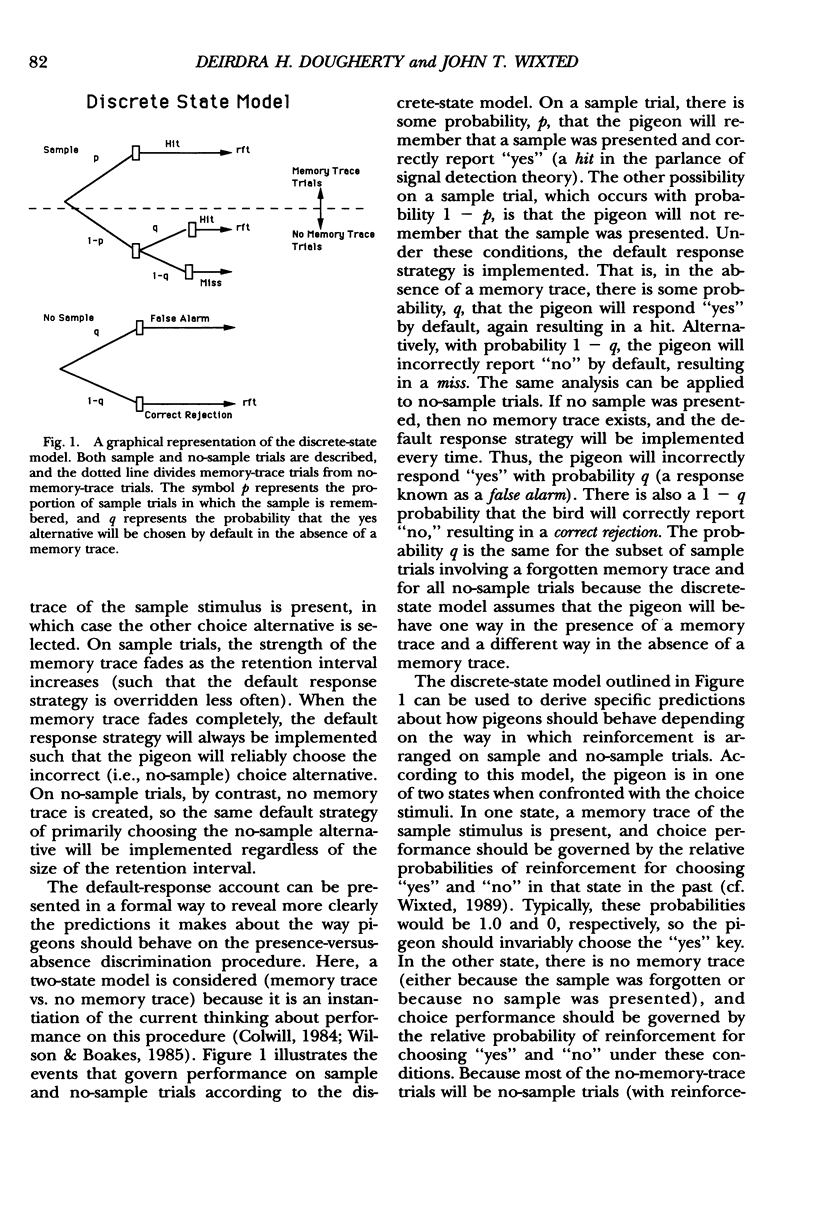
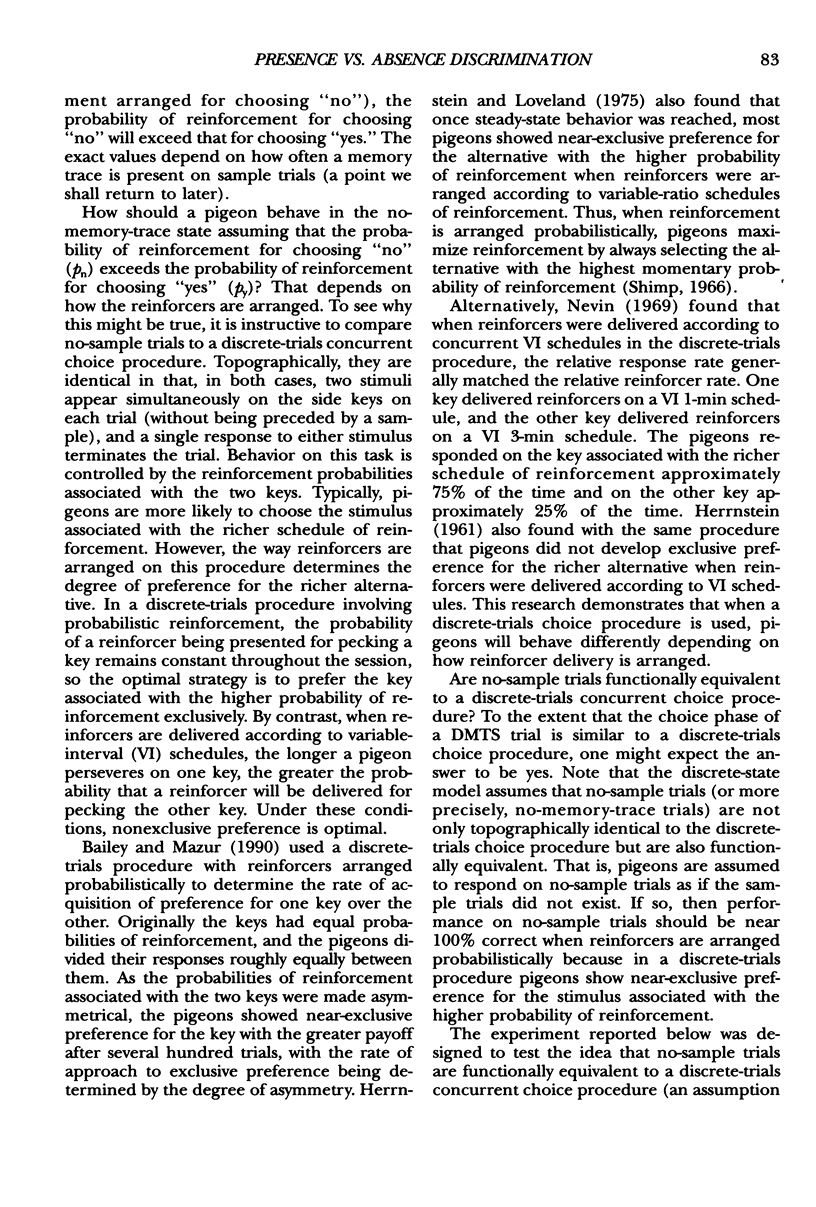

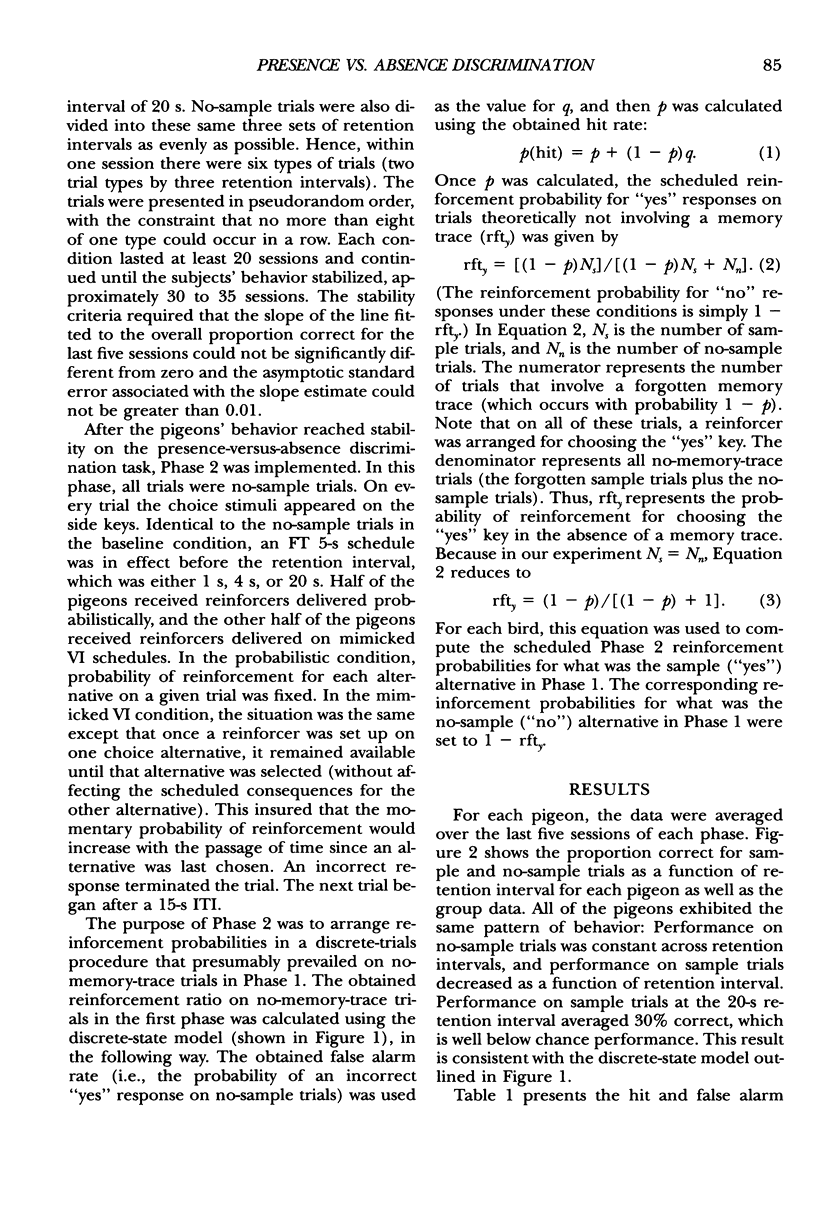
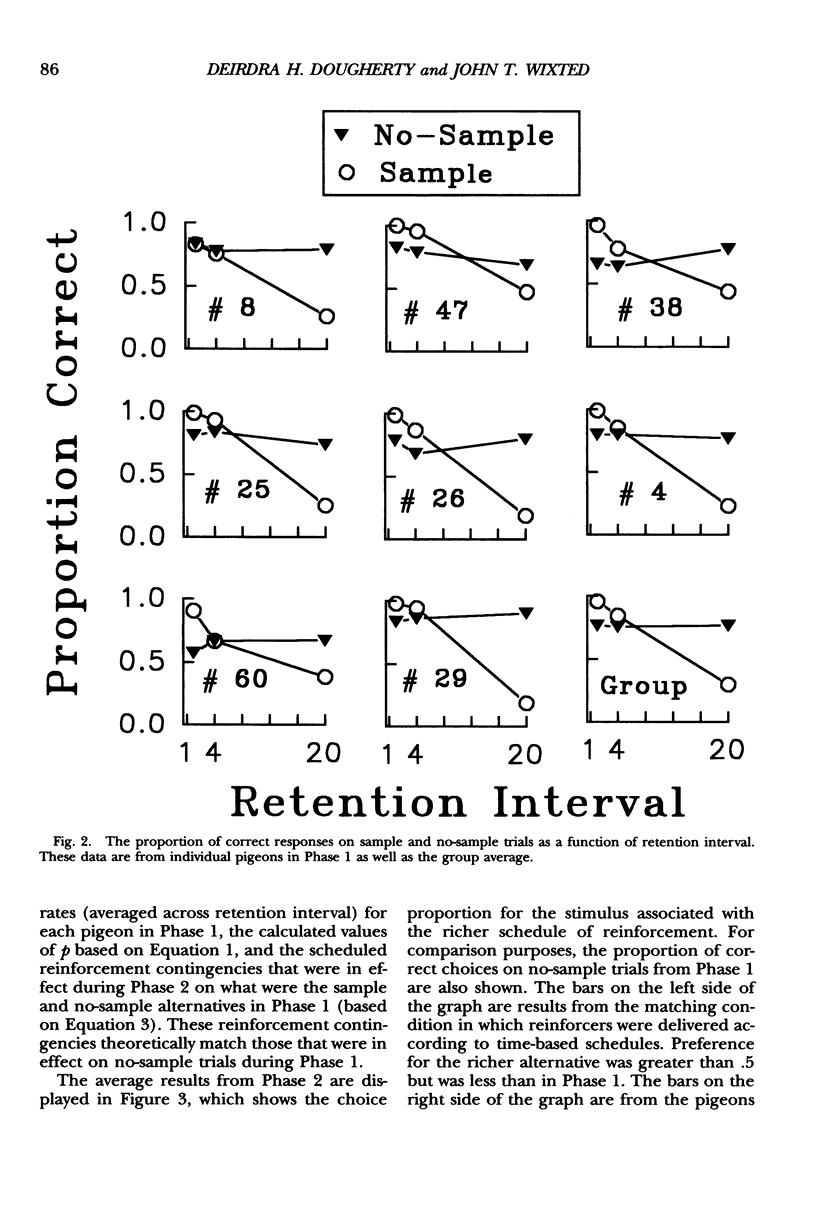
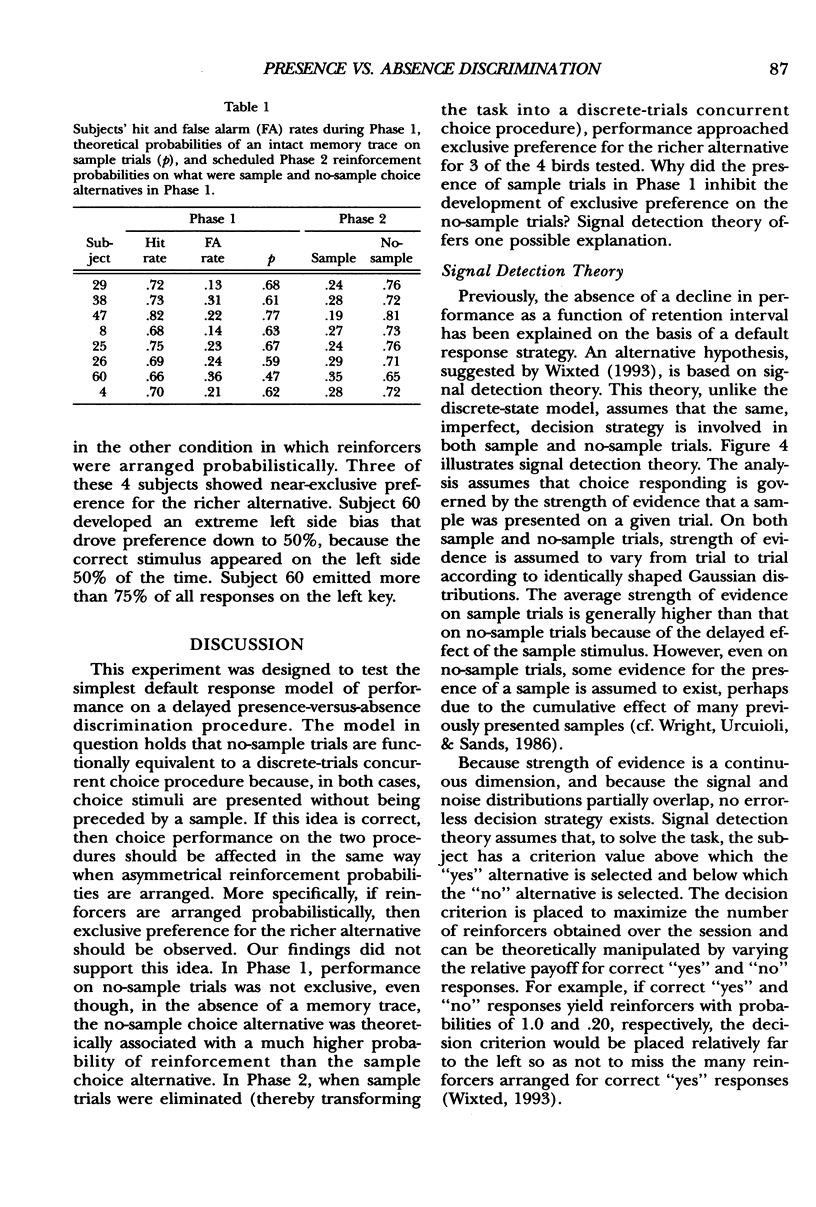
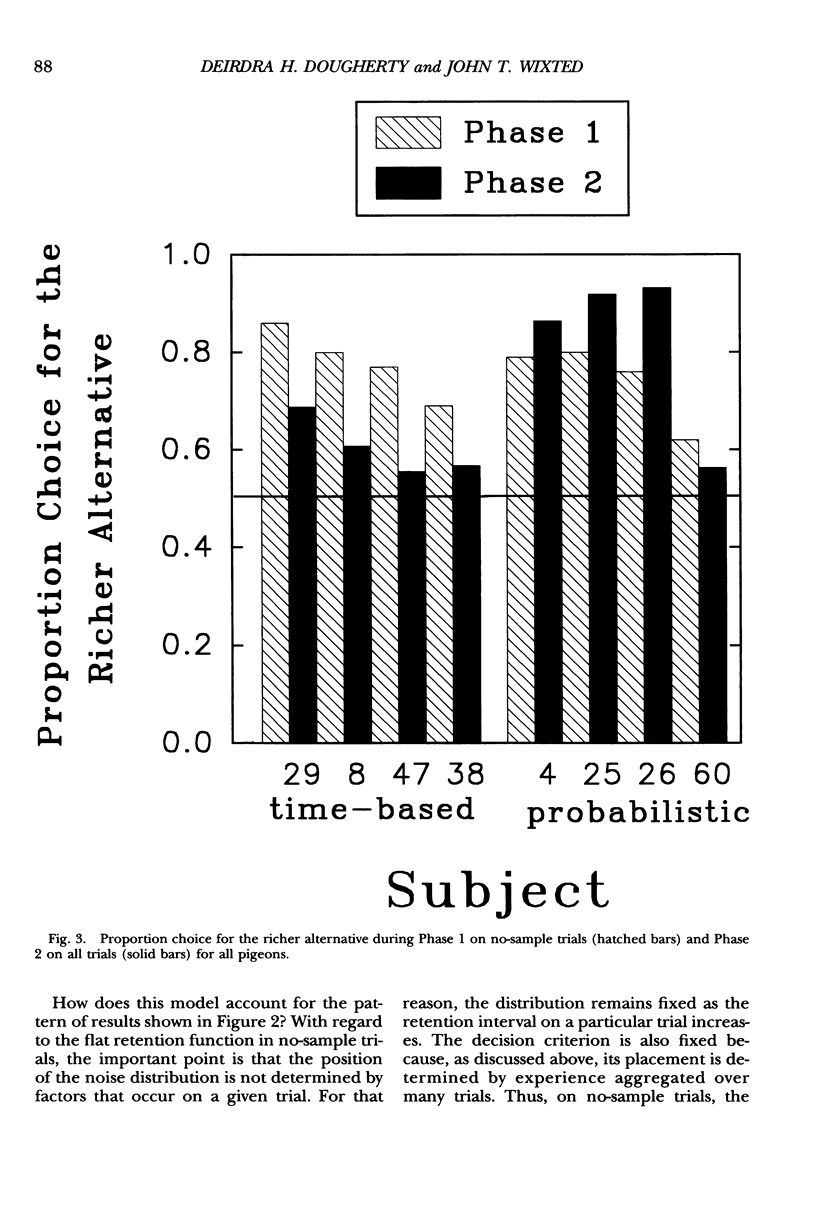
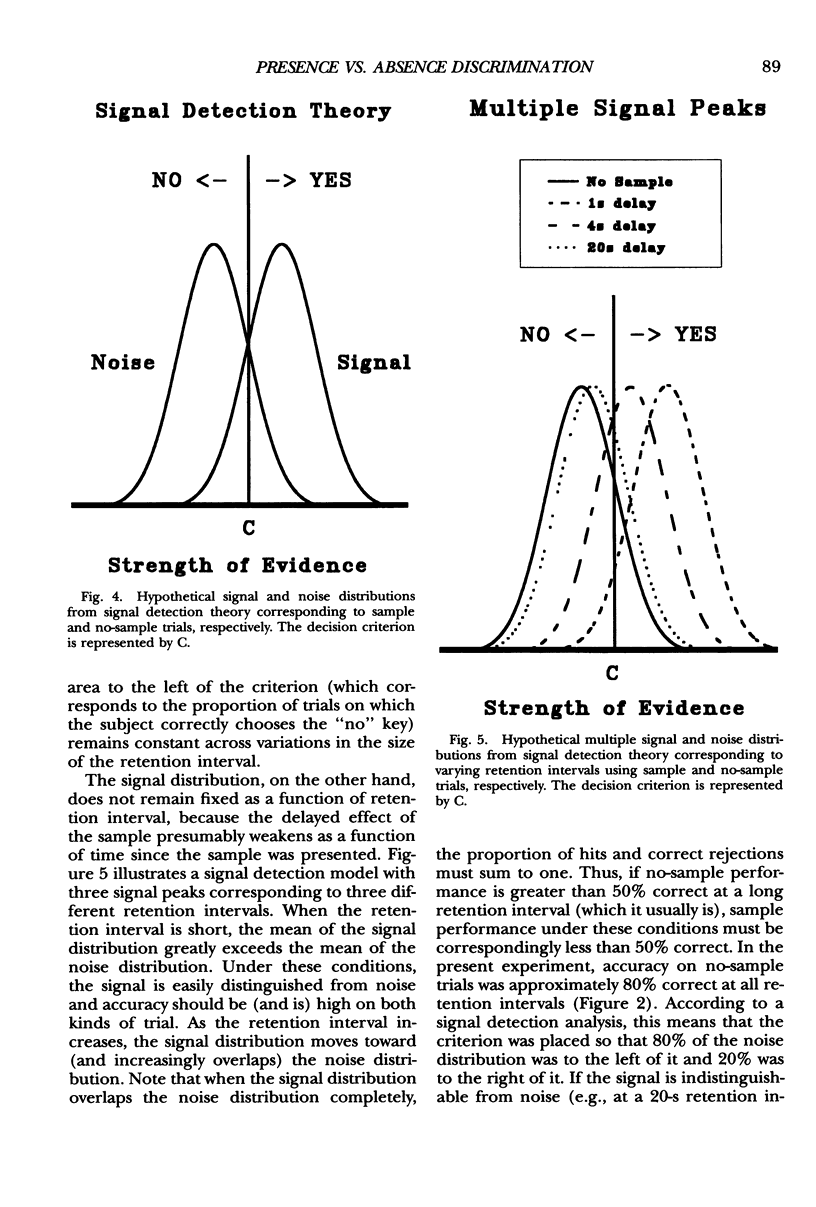
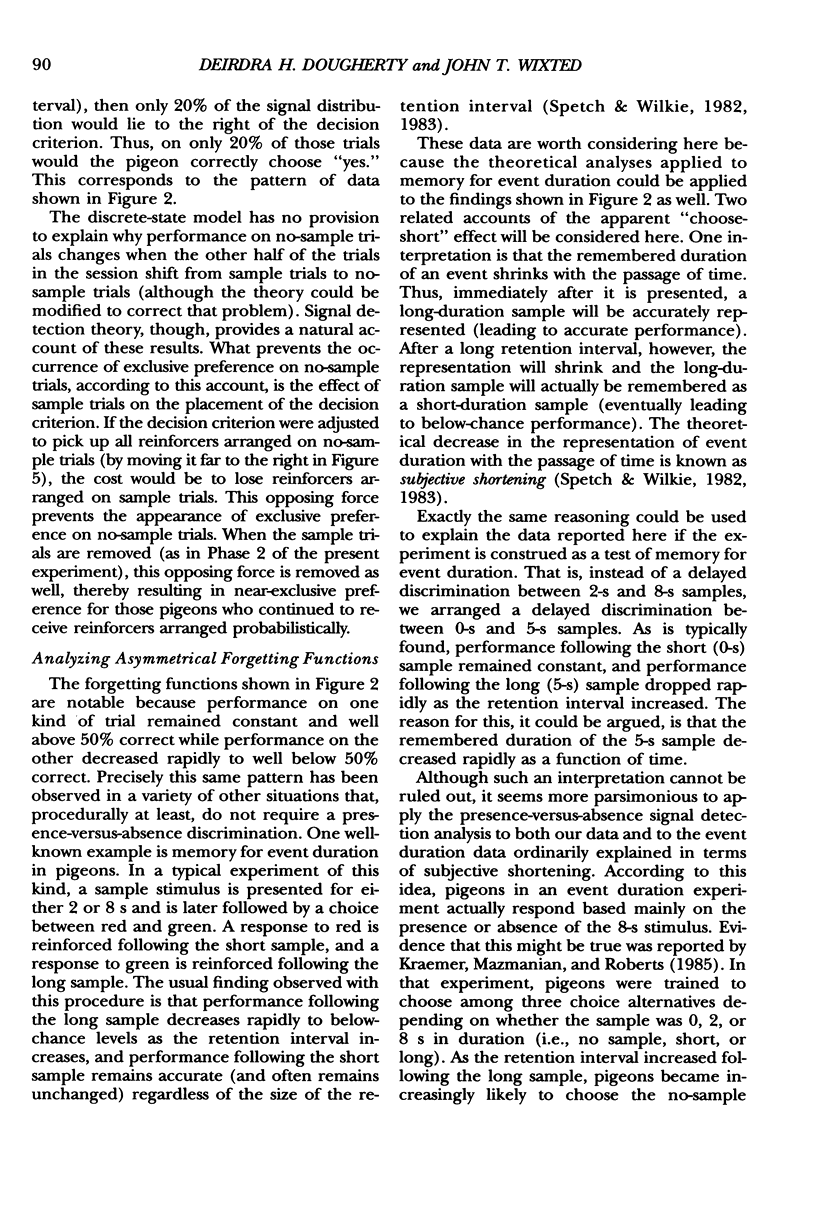
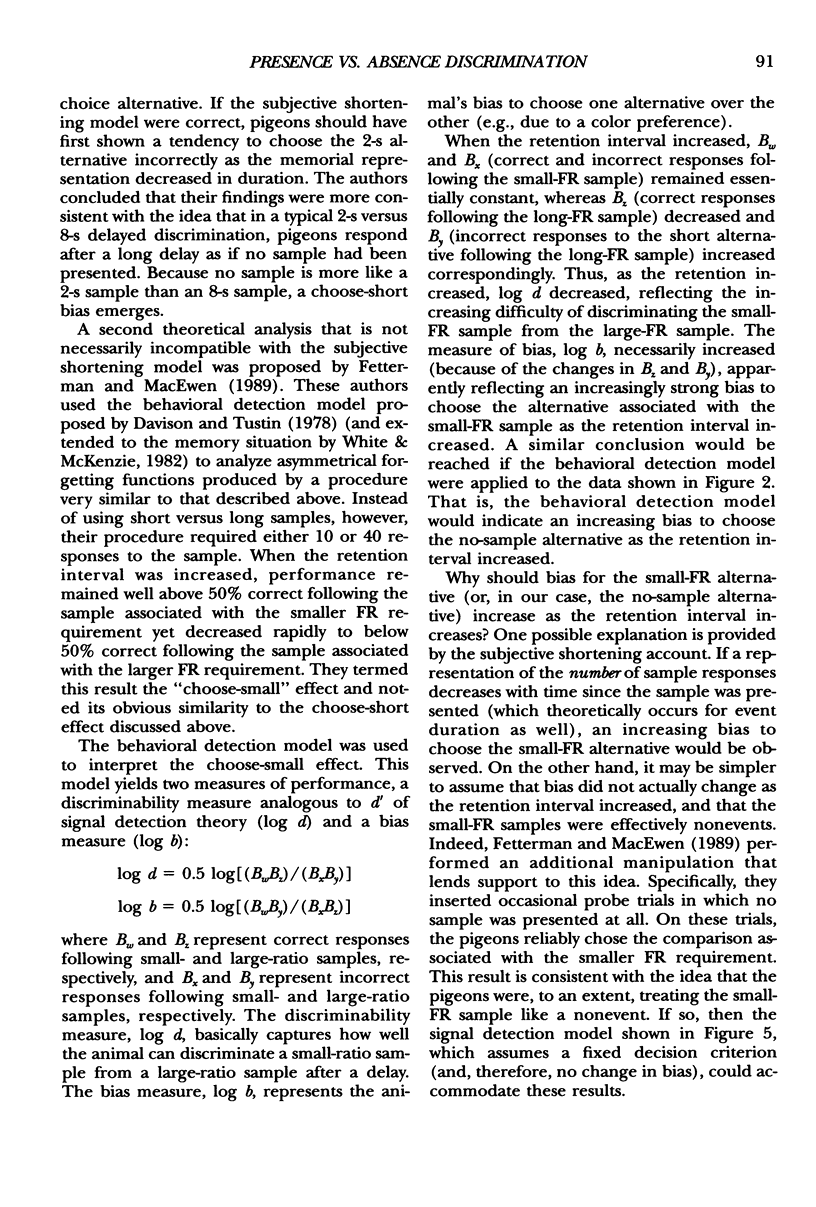
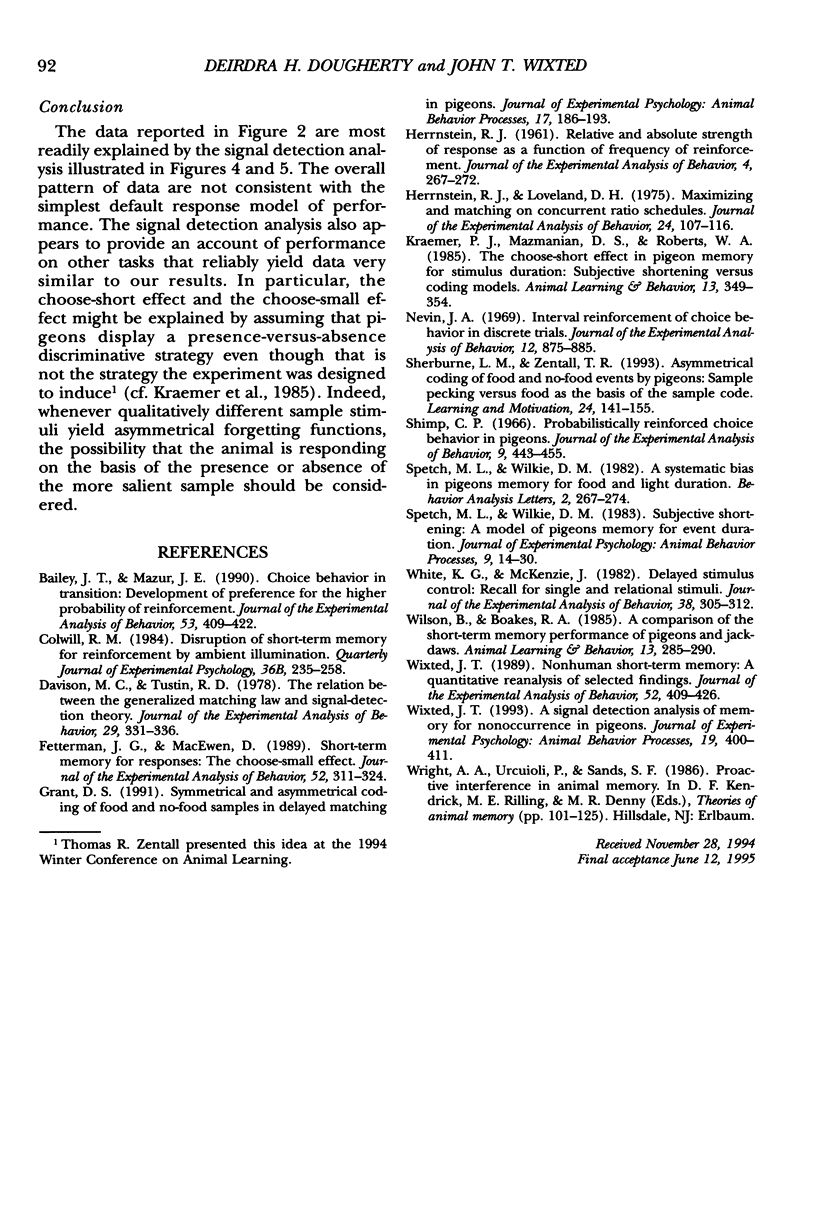
Selected References
These references are in PubMed. This may not be the complete list of references from this article.
- Bailey J. T., Mazur J. E. Choice behavior in transition: development of preference for the higher probability of reinforcement. J Exp Anal Behav. 1990 May;53(3):409–422. doi: 10.1901/jeab.1990.53-409. [DOI] [PMC free article] [PubMed] [Google Scholar]
- Davison M. C., Tustin R. D. The relation between the generalized matching law and signal-detection theory. J Exp Anal Behav. 1978 Mar;29(2):331–336. doi: 10.1901/jeab.1978.29-331. [DOI] [PMC free article] [PubMed] [Google Scholar]
- Fetterman J. G., MacEwen D. Short-term memory for responses: the "choose-small" effect. J Exp Anal Behav. 1989 Nov;52(3):311–324. doi: 10.1901/jeab.1989.52-311. [DOI] [PMC free article] [PubMed] [Google Scholar]
- HERRNSTEIN R. J. Relative and absolute strength of response as a function of frequency of reinforcement. J Exp Anal Behav. 1961 Jul;4:267–272. doi: 10.1901/jeab.1961.4-267. [DOI] [PMC free article] [PubMed] [Google Scholar]
- Herrnstein R. J., Loveland D. H. Maximizing and matching on concurrent ratio schedules. J Exp Anal Behav. 1975 Jul;24(1):107–116. doi: 10.1901/jeab.1975.24-107. [DOI] [PMC free article] [PubMed] [Google Scholar]
- Nevin J. A. Interval reinforcement of choice behavior in discrete trials. J Exp Anal Behav. 1969 Nov;12(6):875–885. doi: 10.1901/jeab.1969.12-875. [DOI] [PMC free article] [PubMed] [Google Scholar]
- Shimp C. P. Probabilistically reinforced choice behavior in pigeons. J Exp Anal Behav. 1966 Jul;9(4):443–455. doi: 10.1901/jeab.1966.9-443. [DOI] [PMC free article] [PubMed] [Google Scholar]
- White K. G., McKenzie J. Delayed stimulus control: recall for single and relational stimuli. J Exp Anal Behav. 1982 Nov;38(3):305–312. doi: 10.1901/jeab.1982.38-305. [DOI] [PMC free article] [PubMed] [Google Scholar]
- Wixted J. T. Nonhuman short-term memory: A quantitative reanalysis of selected findings. J Exp Anal Behav. 1989 Nov;52(3):409–426. doi: 10.1901/jeab.1989.52-409. [DOI] [PMC free article] [PubMed] [Google Scholar]


